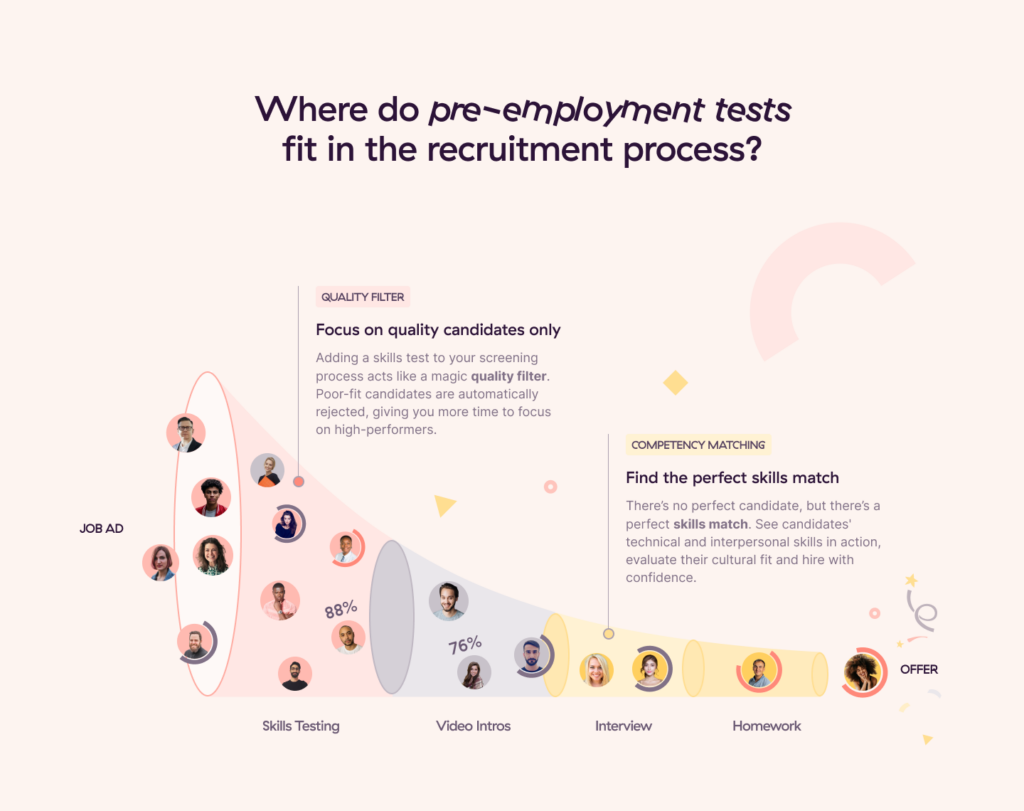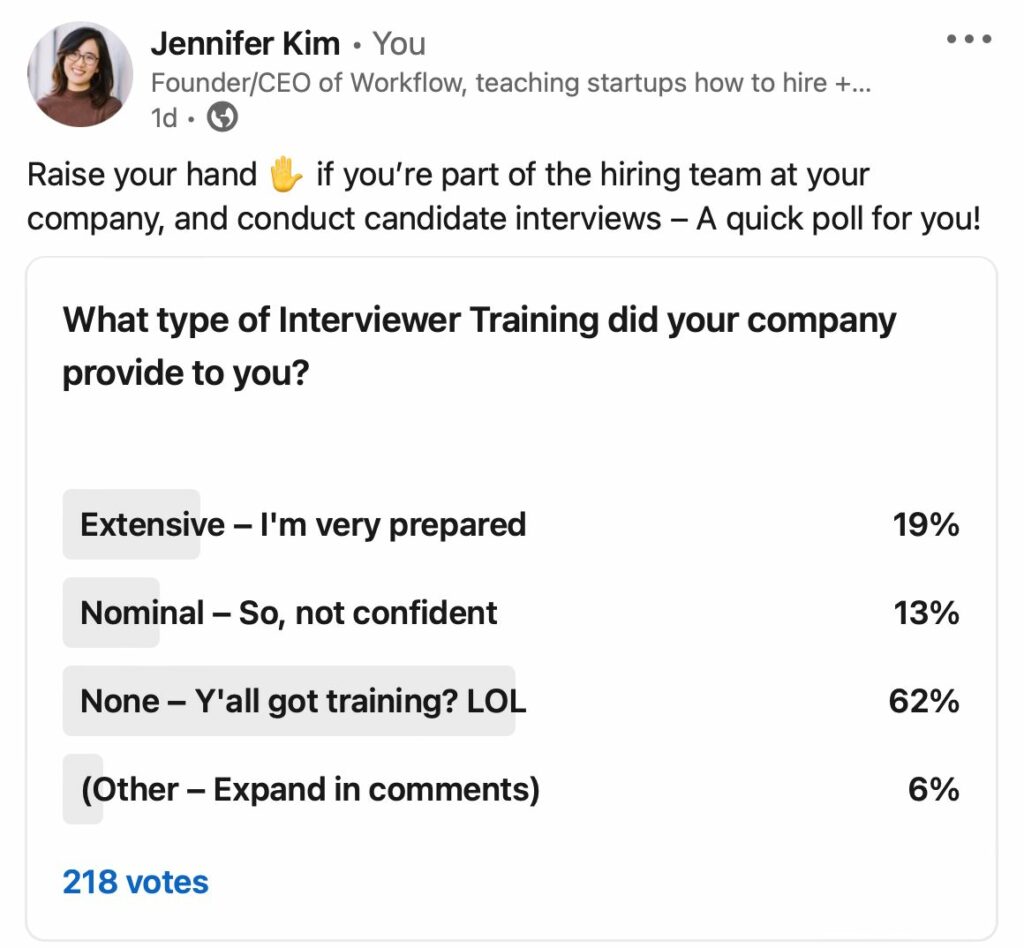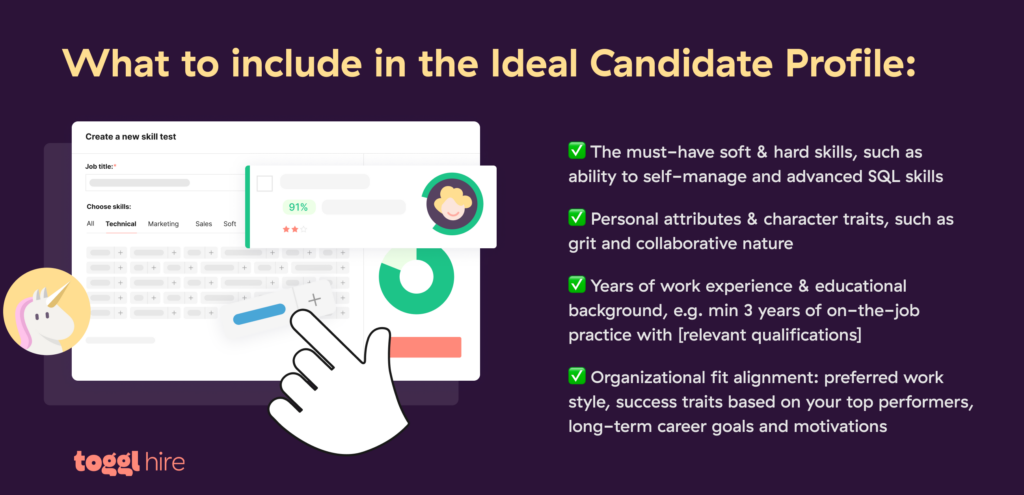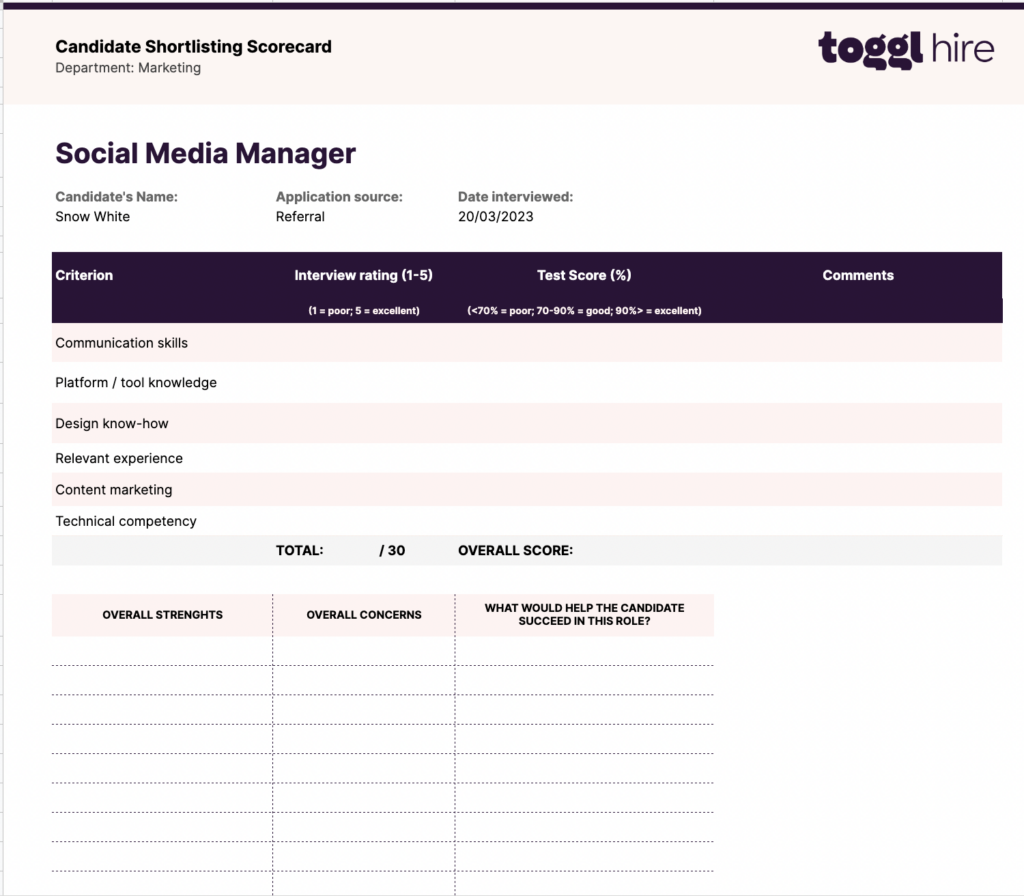Did you know that 62.2% of candidate responses to a recent poll cited “bad interview vibes” as their main reason for turning down a job offer?
Sure, the market may be saturated with job seekers – with job postings receiving an average of 250 applications – but high-performing (Gen Z) candidates will almost always be picky about where they work.
Let’s be honest. The interview training program for hiring managers is a crucial yet often overlooked part of many organizations. And yet, it could be the reason why candidates are turning down your job offers.
So, let’s dive into this topic and see how you can equip your hiring managers with the best relevant interview skills and interviewing techniques to bag the very best candidates.
TL;DR – Key Takeaways
- Interview training is a form of education that helps hiring managers improve their interviewing skills. The goal is to make sure that both the hiring manager and the candidate have a positive experience.
- Interviewing skills training is especially beneficial for those who have never handled interviews before, those who have experience but no formal training, and those who have had training but whose knowledge is outdated.
- Undertaking interview training for hiring managers can help your organization to become more effective when speaking to job seekers for the first time.
- You might need to persuade managers to attend interview training by explaining how a better interviewing process will make their jobs easier and save the company money.
- Time-to-hire is one of the main KPIs for measuring the effectiveness of a company’s hiring efforts. Take any company’s recruitment funnel, and you’ll see that most of the recruitment time is spent briefing hiring managers for interviews, interviewing candidates, and debriefing afterward. Failing to screen candidates at the initial pre-interview stage derails the entire process. That’s why recruiting teams are shifting towards skills-first hiring and interviewing job candidates only after their technical fit has been confirmed.

What is interview training for hiring managers?
It includes various forms of training, all geared towards helping your hiring teams and managers – and others in the company – to improve their interviewing skills and outcomes. It doesn’t matter if your hiring committee consists of new joiners or veteran employees; everyone can benefit from training designed for different levels, including refreshers, to keep up with the evolving job seeker market.
It’s important to remember that hiring is a two-way street: candidates also evaluate interviewers and how they represent the company in an interview setting in addition to being evaluated themselves. If either of these parties doesn’t have a good experience, the opportunity is lost. So it’s important that both parties put in the effort.

Who needs interview training – and why?
As we mentioned above, almost everyone stands to benefit from a bit of interviewer training. However, there are a few specific groups who will gain the most value from interview training, namely:
People who have never done interviews or never had interview training before – These individuals, often inexperienced hiring managers, may not be familiar with the different types of interview structures, questions, or how to respond to candidate answers effectively.
People who have completed loads of interviews but had no formal training – Even though they may have a lot of experience with interviews, they may not be aware of the latest trends in interviewing. Additionally, like a singer with no formal vocal training, they might have picked up some bad interviewing habits over the years that need some shaking off.
People who have experience in interviews and training, but not recently – These individuals may be a little rusty on what they learned if it was too long ago. Moreover, the advice and best practice methods they learned might be outdated.
Of course, there are also a few other factors to consider, such as setting aside time for training, the cost to the company, and staff members who may feel they don’t need it.
As for the latter, let’s look at how to change their minds.
How to persuade managers that they need training?
“You can’t teach an old dog new tricks” – this saying needs to be thrown out of the window, especially if your organization wants to train interviewers effectively. So, how do you convince these ‘old dogs’ to learn new tricks? We have a few answers for you:
- Just ask – Start here, seriously. Don’t be afraid to ask your team if they want any specific training. Training comes in all shapes and sizes. Maybe a refresher course is just what they’re after.
- Tell them how it’ll make their jobs easier – Lead with the benefits to answer, what’s in it for them? Nailing those hiring KPIs need not be a struggle. Asking the right questions and supplying the best answers in a job interview will help the hiring department find the perfect candidates easier.
- Show them the bigger picture – A bad hire can cost the company between $17,000 to $240,000. If they’re still hesitant, ask the CFO to explain how losing that much per bad hire is not a great idea.
How do we expect any success when Interviewers are getting thrown in front of candidates with little to no training? It’s no wonder – most Interviewers are unprepared, anxious/checked out, or simply burnt out. But so are recruiters! They’re busy dealing with the challenges of their own roles, which means no one has the bandwidth to create an impactful training. So the cycle continues.
Jennifer Kim, CEO @ Workflow | Source
Now that you’ve at least piqued their interest, it’s time to focus on training ideas and setting up knowledge sessions. If you’re still with us, you’re only 15 steps away from seeing real improvements in those interview feedback surveys!
15 Step Interview Skills Training to help find, attract and hire the best talent
The return on investment of a well-trained hiring manager is clear to see. By providing hiring managers with the skills and knowledge needed to conduct effective interviews, organizations can make quality hiring decisions, increase their chances of hiring the right talent, and get that yes from their top picks.
Follow the advice in these 15 steps and start transforming your interview skills.
1. Secure hiring manager buy-in
Just grabbing the interest of the higher-ups and the HR team isn’t enough to sell them on hiring manager training. Set up a meeting to discuss how you would like to approach interview training and which areas they feel they might be lacking.
For example, some of the team might struggle with assessing soft skills, while others could say that the time between interviewing candidates and making a job offer is too long (it can take anywhere from 20 to 40 days!).
2. Determine job skills and competencies
In preparation for an interview, it’s good practice to first determine the job skills and competencies that are essential for success in the role you are hiring for. Once you have the information, it’s much easier to prep the hiring team for the upcoming interview process.
By planning, they can quickly identify which skills, traits, and talents to look out for during an interview.
3. Create an ideal candidate profile
Another name for an ICP is personas – and there’s a good chance you’ve already had to go through this process when dealing with clients. The question is, what does your ideal candidate look like?
To help determine which candidates should continue to the next round, use an ideal candidate profile to guide the interview process and evaluate candidates against.

4. Focus on the candidate experience and engagement
The candidate experience refers to the total interactions that take place between an organization and a job seeker during the hiring process. According to multiple studies, including this Glassdoor report, a favorable candidate experience can increase the quality of hire and the likelihood of attracting and retaining top talent.
To improve the candidate experience, there are various actions that organizations can take. These include offering timely and transparent communication, valuing candidates’ time, and streamlining the interview process to make it more effective.
TIP: Try conducting mock interviews with the entire interview team. Have each one take on the role of the candidate and interviewee, noting their strengths and weaknesses and areas for improvement. Steal these interview questions:
5. Train hiring managers to combat biases
Unconscious bias is a partiality or prejudice towards or against certain individuals or groups, often operating at a subconscious level. Raising awareness of our unconscious biases is crucial for addressing them, especially in the hiring process, where they can lead to discrimination claims the selection of less qualified candidates.
Overcoming unconscious bias requires a concerted effort to expose ourselves to various perspectives and opinions. Hiring managers can receive training on recognizing and mitigating unconscious bias by understanding its different forms, how it can affect the hiring process, and ways to overcome it.

6. Learn about body language
Body language can be a valuable tool for hiring managers, as it can provide insights into candidates’ thoughts, feelings, and reactions. Hiring managers can be trained to interpret body language by learning about the different types of body language, how to interpret it, and how to use it to their advantage in the hiring process.
A few examples to look out for:
- If the candidate has crossed their arms and is leaning back in the chair, they are in a defensive position.
- Elbows on the desk and chins in their hands mean they may be bored during the interview.
- Excessive blinking can indicate that the job seeker is nervous.
- Twitching neck muscles can be a sign of stress, and that the candidate doesn’t want to reveal any information to you.
Hiring managers’ body language can also negatively affect the candidate experience
The interviewer also needs to be aware of their own body language. If they display any of the above points, it can create a negative experience for the candidate, who will decline to continue further.
Most importantly, looking bored, nonchalant, or like you have somewhere more important to be, are feelings that come across in body language. Other examples to avoid include not making eye contact, interrupting the interviewee by cutting them off when they are speaking, or making them feel uncomfortable in any way.
7. Give hiring managers an interview preparation checklist
By creating a robust checklist, hiring managers can quickly familiarize themselves with the entire interviewing process, from making initial contact with the candidate to presenting them with an offer, as well as important tips, do’s, and don’ts.
The checklist should include items such as reviewing the job description, resources for developing interview questions, example answers to common interview questions, using an interview scorecard, taking notes, being mindful of body language, etc.

8. Equip hiring managers with different types of interview tools and structures
There are a variety of interview tools and structures that can be used to assess candidates. Ask your hiring managers how familiar they are with the most common interview types, and organize training where relevant for any knowledge gaps.
Different types of interviews:
- Structured interviews – Uses a predetermined set of questions and evaluation criteria for consistency. This is a standard interview.
- Unstructured interviews – This is flexible and conversational, allowing for a more organic conversation.
- Video interviews – These can be conducted remotely using video conferencing platforms and replicate other interview types’ structures.
- Asynchronous interviews – Use technology (see our Video Intros) to interview multiple candidates simultaneously as candidates send in their pre-recorded video answers.
- Mock interviews – Simulates a real interview scenario to help candidates practice and gain feedback.
- Role-playing interviews – These help assess the candidate’s ability to handle specific job-related situations.
- Panel interviews – Involve multiple interviewers simultaneously interviewing a candidate.
- Peer interviews – Involve the job seeker’s potential colleagues or team members interviewing the candidate to assess fit within the team and culture.
- Blind interviews – Conceal certain identifying information to reduce bias, increase the diversity of the candidate pool, and score candidates consistently.
- Group interviews – Saves time when there are many applications for only a few job vacancies, but it’s not ideal since you cannot focus on a specific candidate.
- Depth interviews – This is a semi-structured interview to assess a candidate’s expertise.
- Informal interviews – A friendly conversation without formal procedures, generally held at a coffee shop.

9. Offer training courses and seminars
In addition to one-on-one training for hiring stakeholders, organizations can also offer a training program with a talent acquisition leader. These courses and seminars can provide hiring managers with the opportunity to learn from experts and network with other hiring managers.
10. Make use of the latest technology
Pre-employment assessment tools are software used to screen and evaluate potential job candidates based on their skill set and cultural fit for a specific role.
Selecting the right pre-employment testing tools for your business can be challenging due to the many options available. Researching the best testing tools on the market can be overwhelming for hiring managers. That’s why we created this list of the 30 best pre-employment tools to help you.
11. Ask relevant questions – avoid small talk
It’s easy to confuse small talk with icebreakers during interviews. Questions such as, “Where do you live?” “Did you watch the latest season of The Witcher on Netflix?” “Which restaurant has the best pizza?” are useful to break the ice and help make the candidate feel more relaxed, but they won’t help you drill down and uncover the skills that the candidate has – unless you’re hiring a food or pop-culture blogger.
Help your hiring team to understand that while some small talk is great as an icebreaker, it’s mostly unnecessary and not the best use of everyone’s time.
12. Be aware of interview red flags
Red flags in recruitment are warning signs that indicate potential problems with a candidate and play a role in helping to predict if they’ll be a good fit. These warning signs can be obvious, such as unprofessional or disrespectful behaviour. But they can also be more discreet, such as microaggressions or evading certain topics.
An experienced hiring team can quickly spot red flags in an interview. This saves time and helps avoid hiring unsuitable candidates.
13. Use a candidate interview scorecard
A candidate scorecard is a rating system used by interviewers to evaluate how well a candidate fits the criteria for a role. The scorecard includes categories for hard and soft skills that each interviewer rates.
Using the same scorecard for every candidate and having the entire panel rate them on the same categories promotes a more objective and fair hiring process. Creating an easily replicable scorecard across roles helps to deliver fast, fair interviews.
14. How to best end an interview
Many hiring managers seem to take the end of an interview for granted (we’ve all been through this, right?). Hiring managers should thank the candidate for their time and provide clear next steps, such as when the decision will be made and, if it’s positive, what’s next.
Using interviewing techniques only ends when the interview does. Stay away from generic, vague answers like “We still have a lot of people to see,” “We’ll get back to you,” or “Don’t call us; we’ll call you.” Job seekers want answers fast so they can move on.
TIP: Don’t forget to leave some time at the end of the interview for the interviewee to ask you some questions. This is usually their chance to get to know you and your organization better.
15. How to follow up – timeliness and techniques
Last but not least, following up with candidates promptly – and using personalized communications – is really important. It’s essential to provide an update on the decision-making process and offer to answer any candidate’s questions.
Now that you’re ready to start bolstering the interviewing skills of your organization, you’ll need software that can streamline and simplify the process.
Select the best candidates for interview with Toggl Hire
With so many candidates to choose from – we hope! – it’s important to have a method that allows you to effectively and efficiently screen them. Automating this step is a huge time-saver, and with the right software, you can filter the best from the rest in no time.
Depending on your hiring process, with Toggl Hire you can screen candidates using different tools:
- Skills tests: see our library of 180+ skills
- Video intros for asynchronous interviews
- Homework assignments for late-stage interviews
The most important thing to remember is that interviews have a notoriously low chance of predicting a candidate’s future job performance. Combining them with competence-based assessments is the only reliable way to hire!
Juste loves investigating through writing. A copywriter by trade, she spent the last ten years in startups, telling stories and building marketing teams. She works at Toggl Hire and writes about how businesses can recruit really great people.







